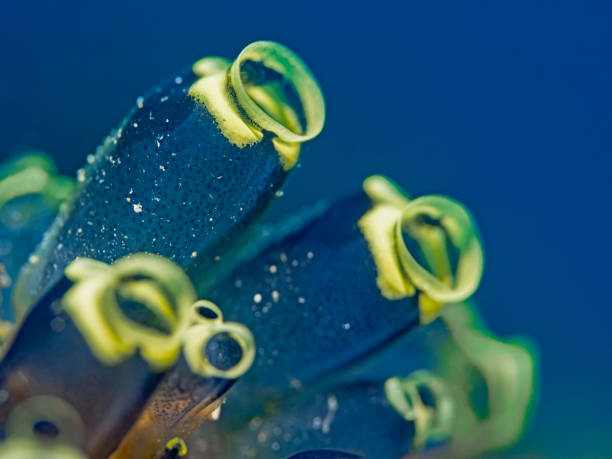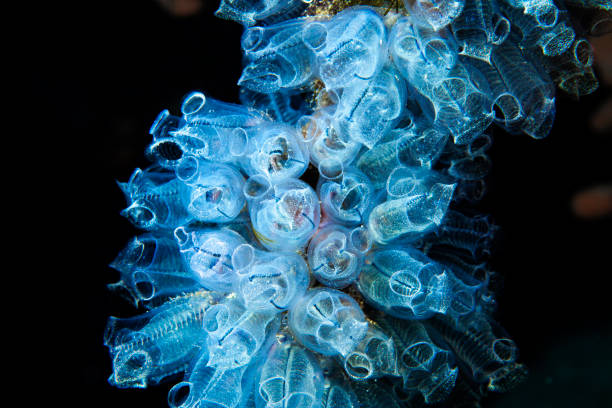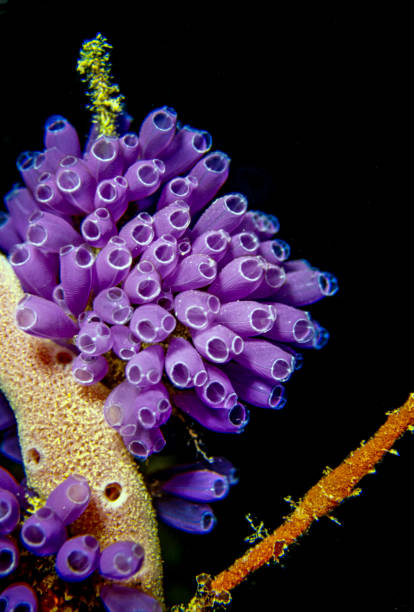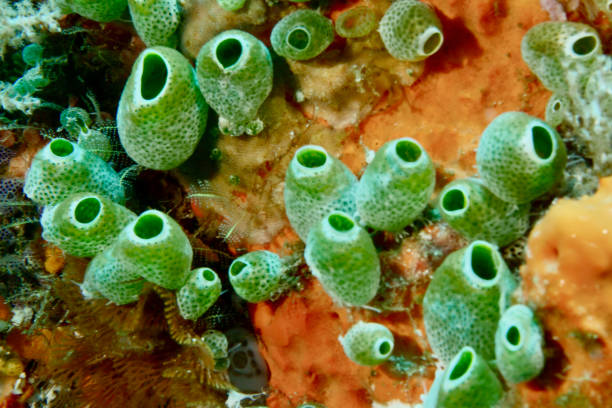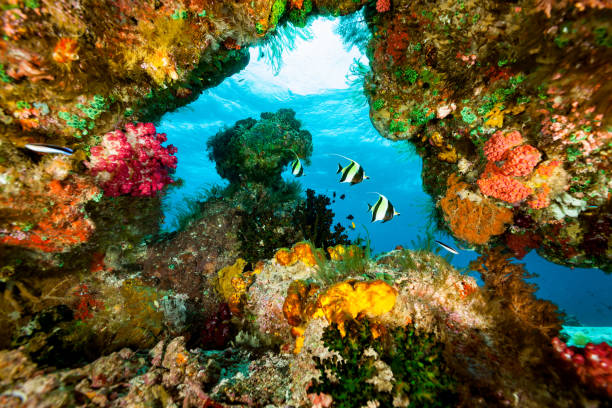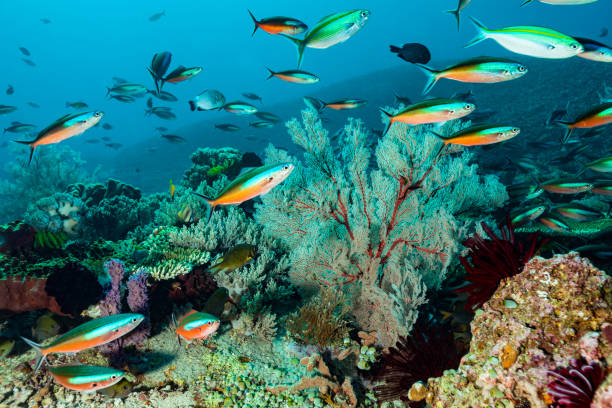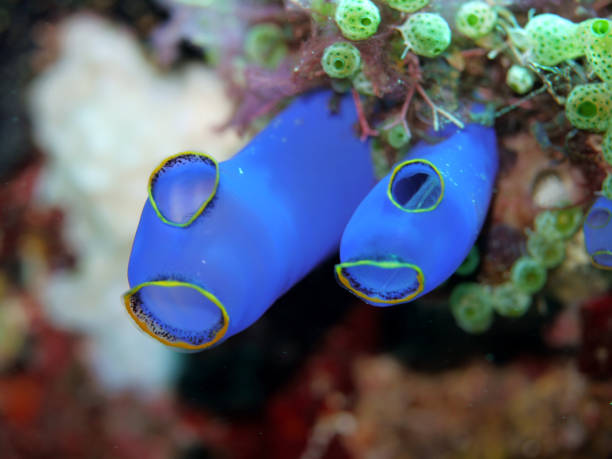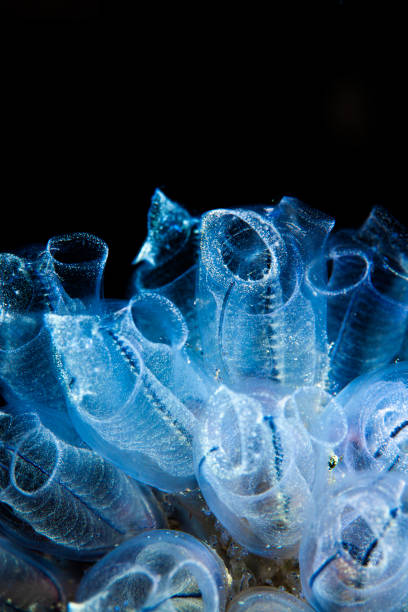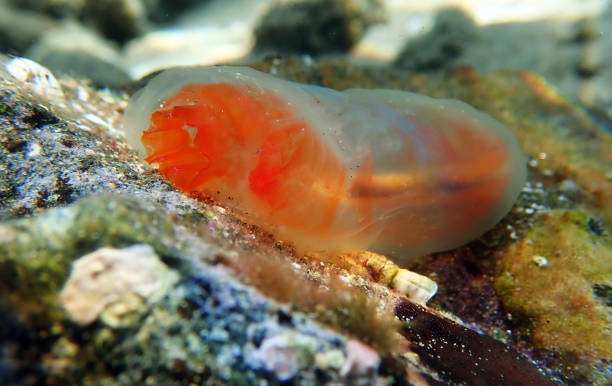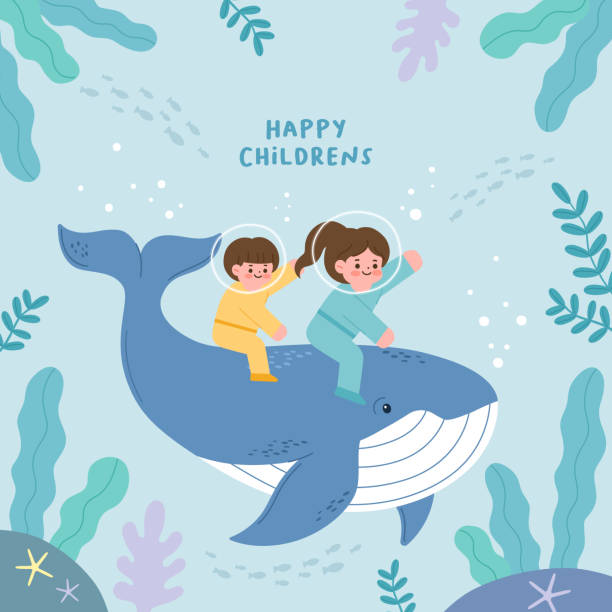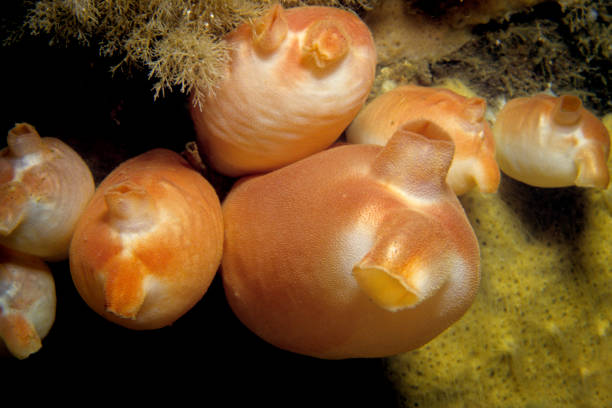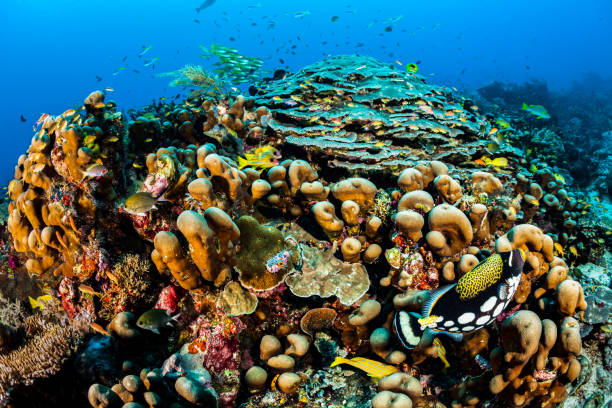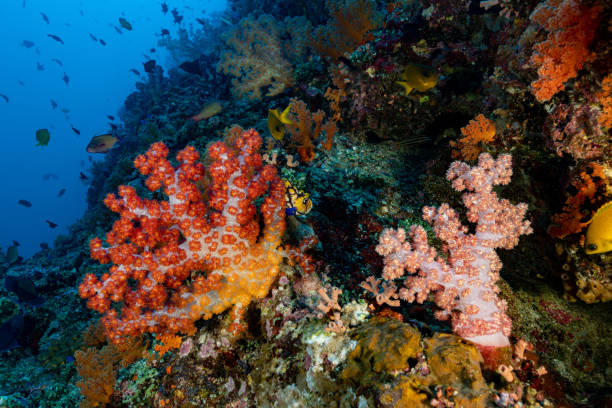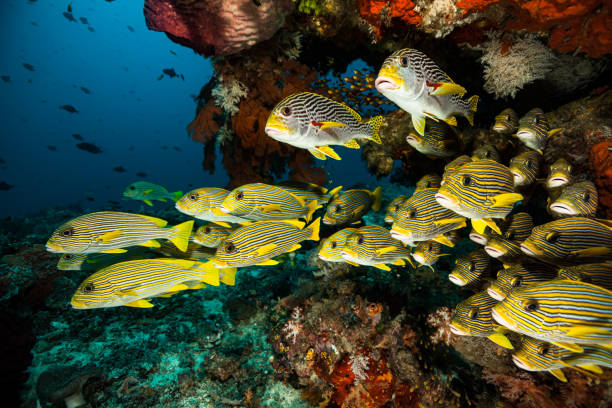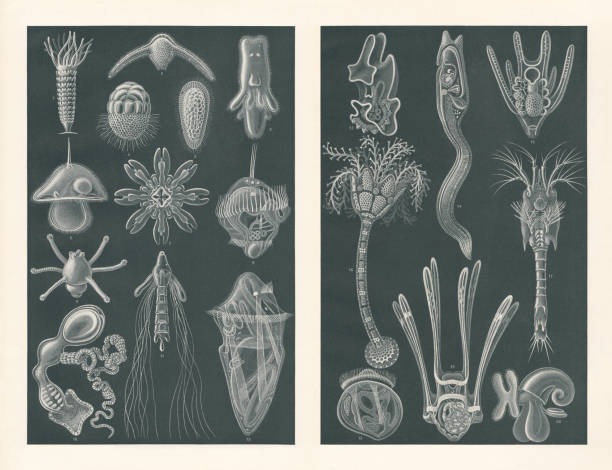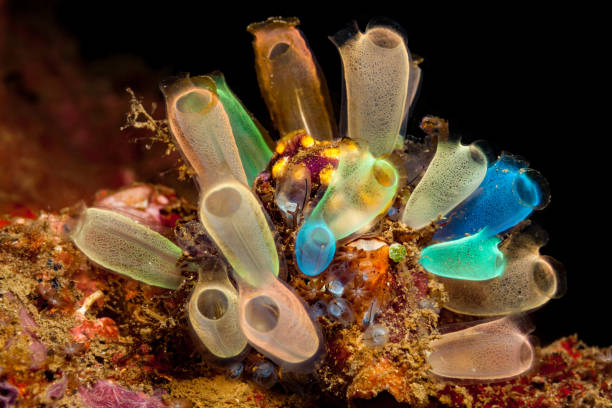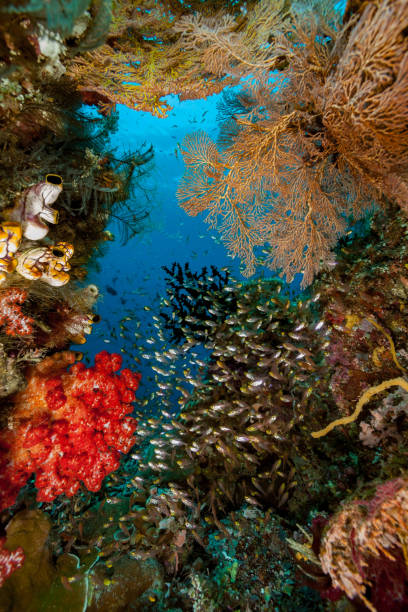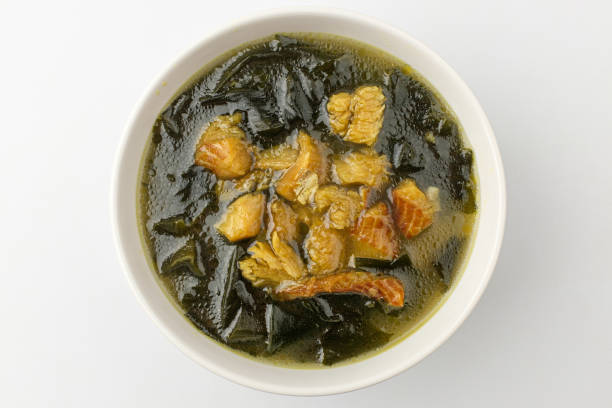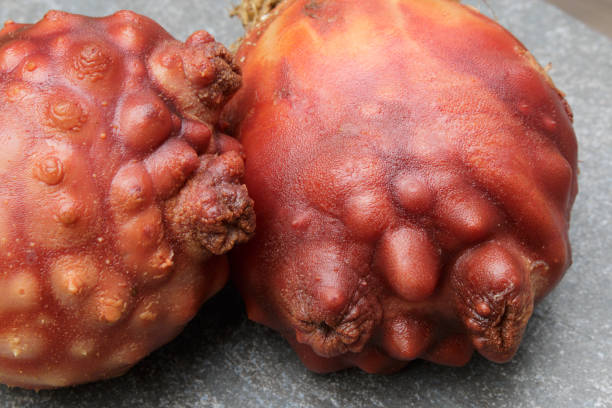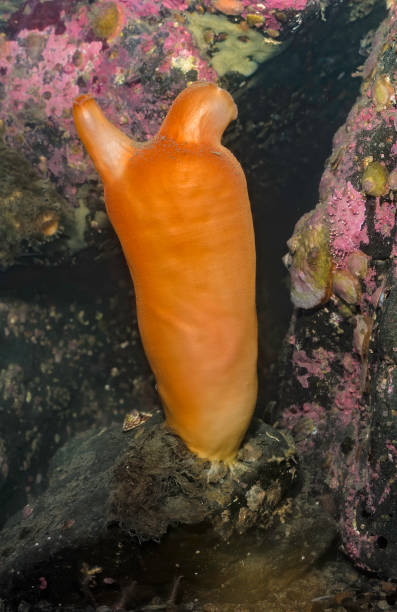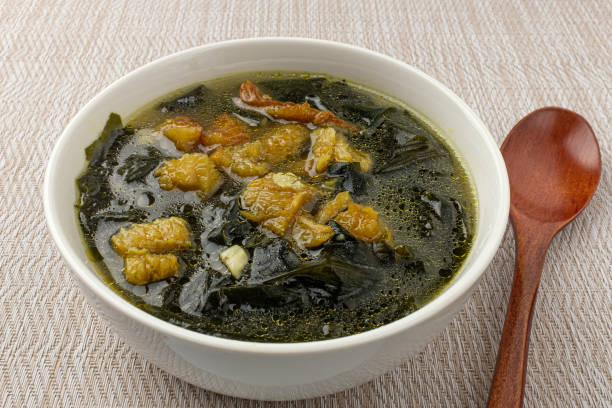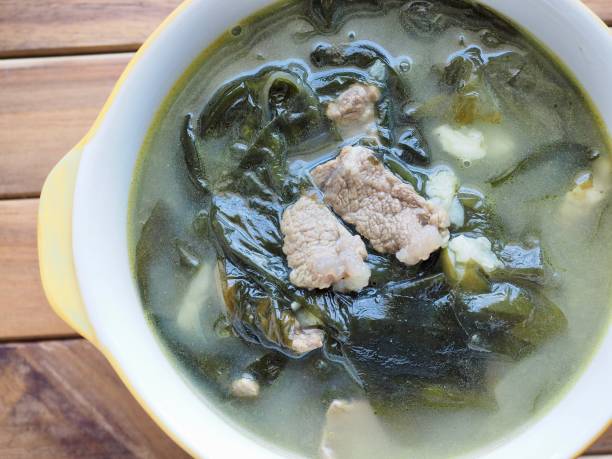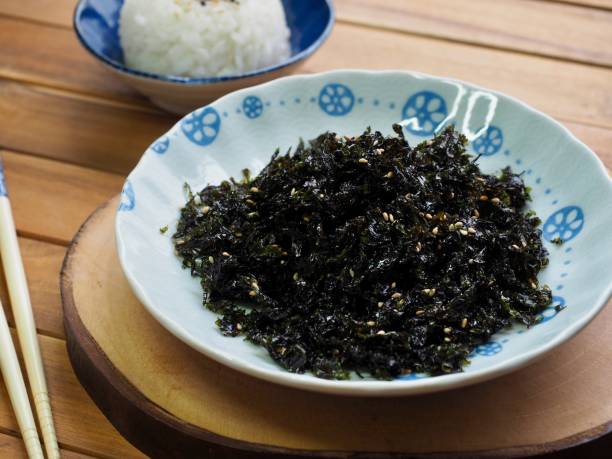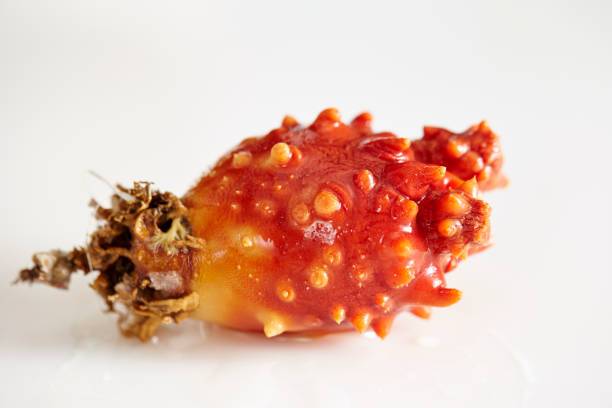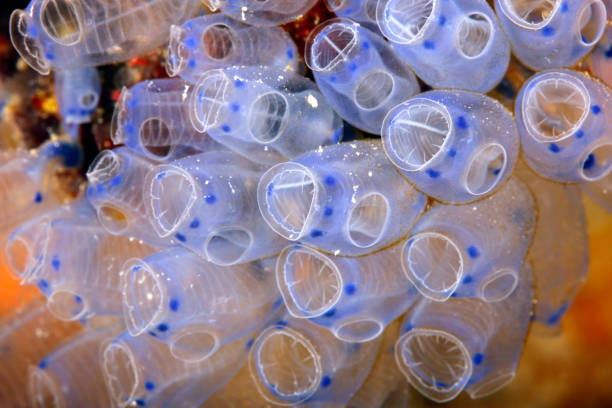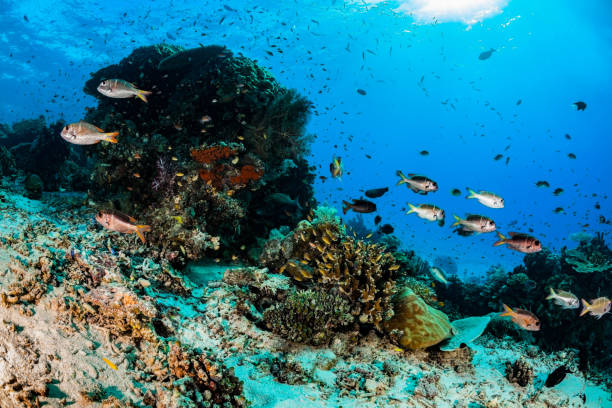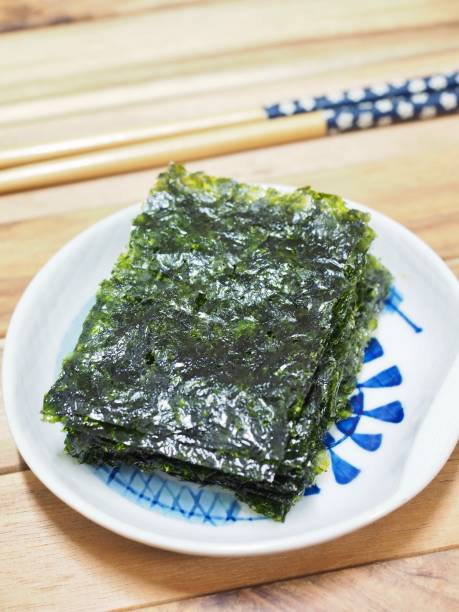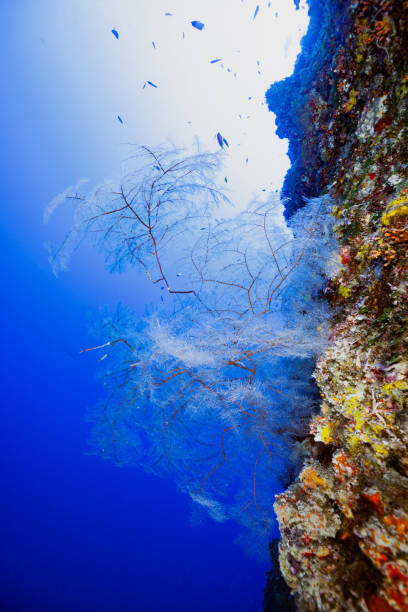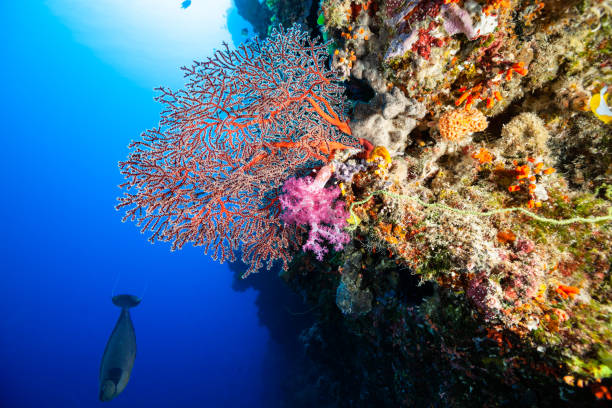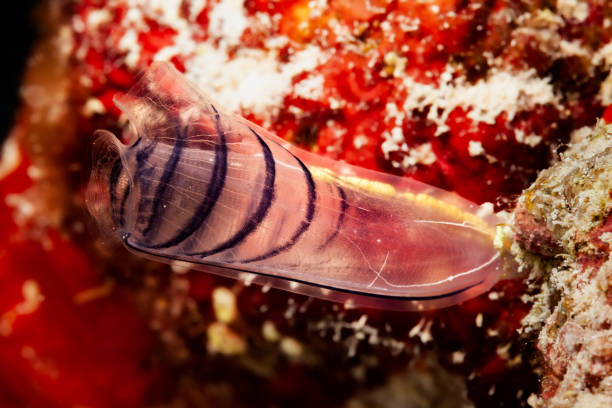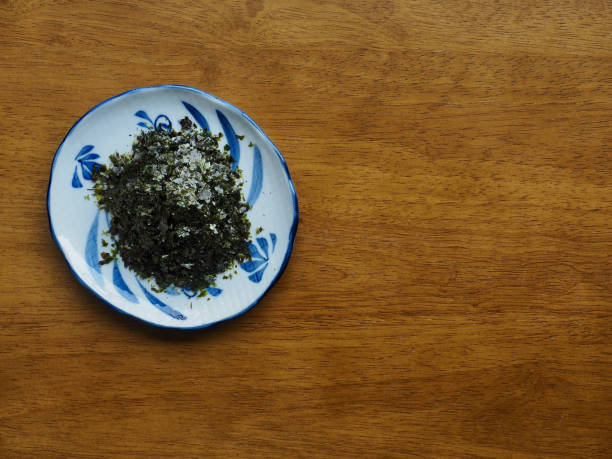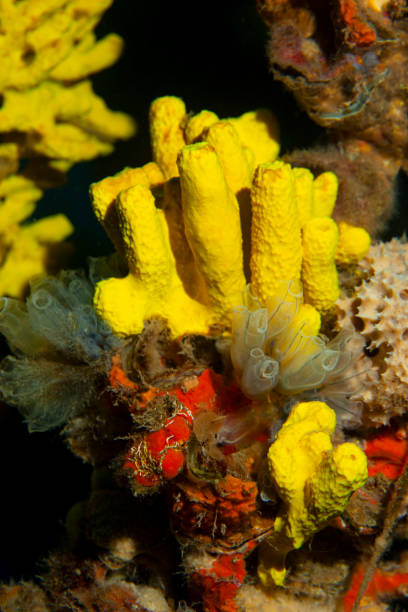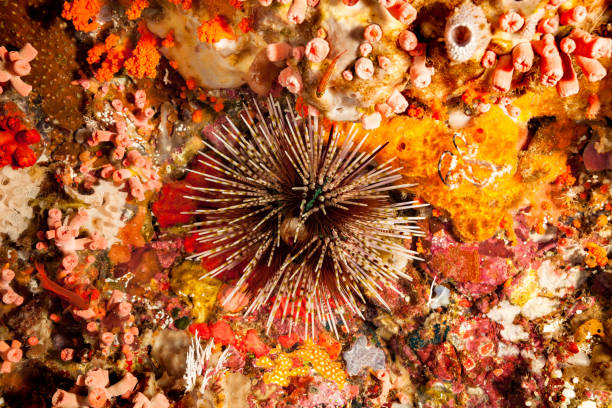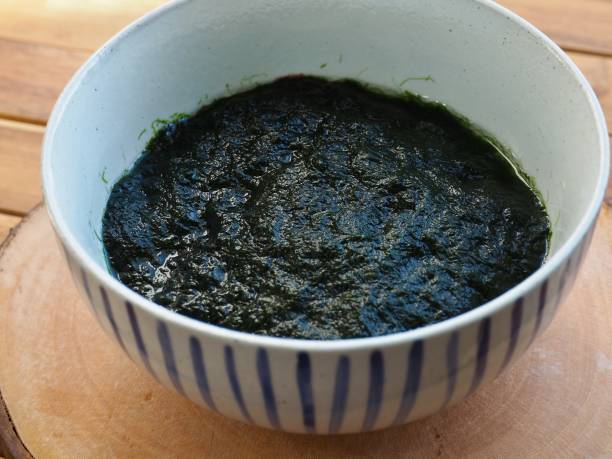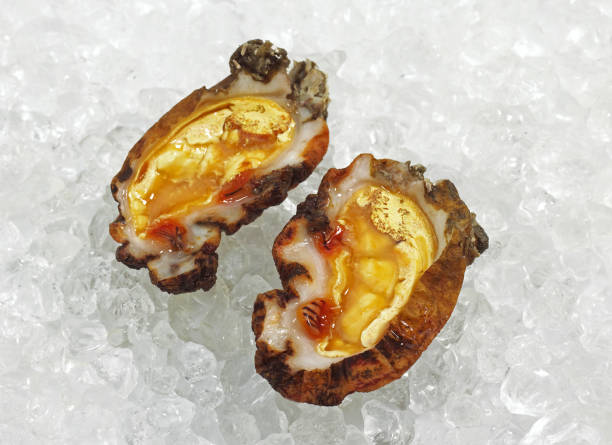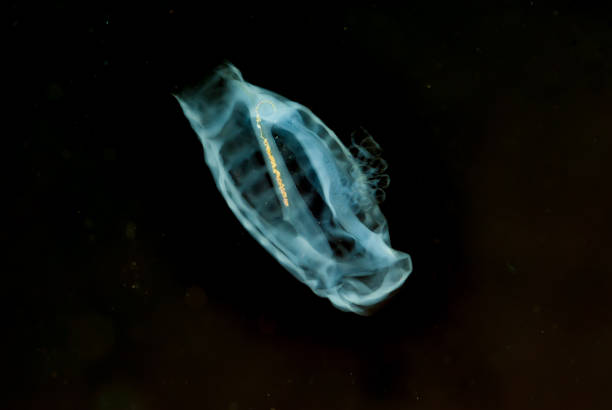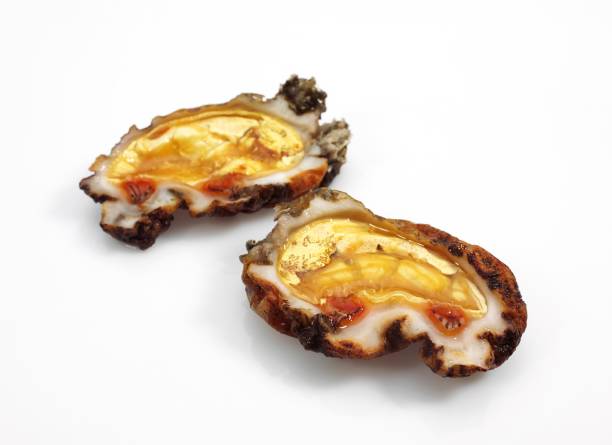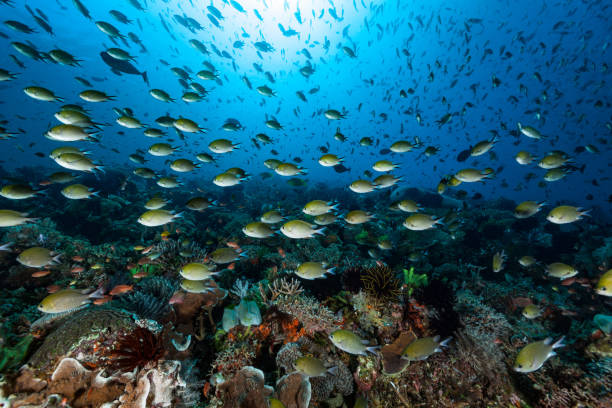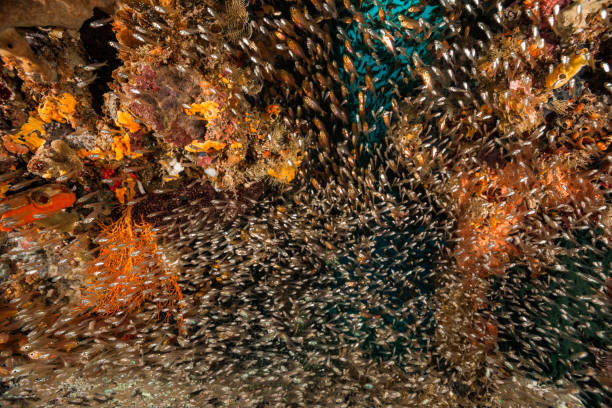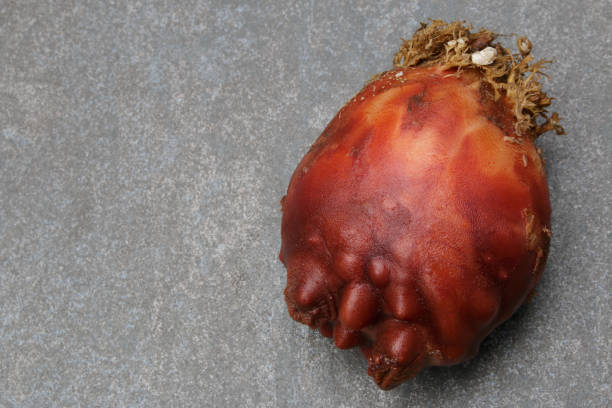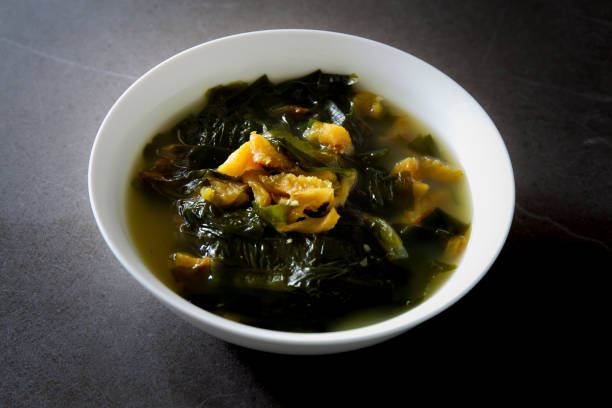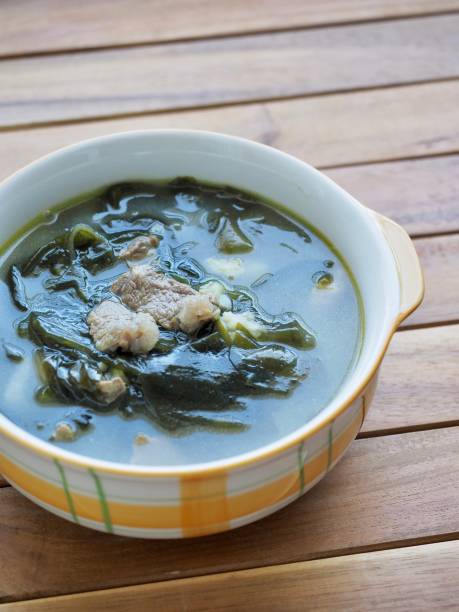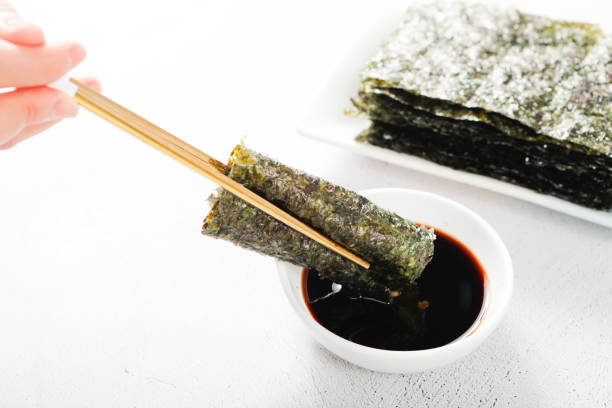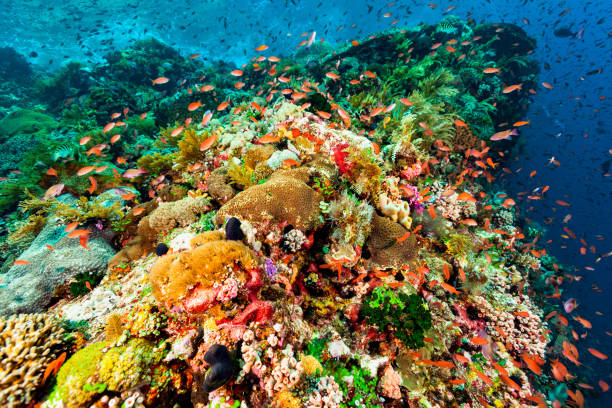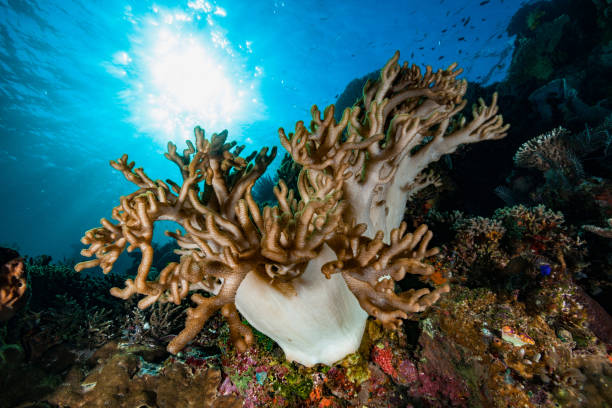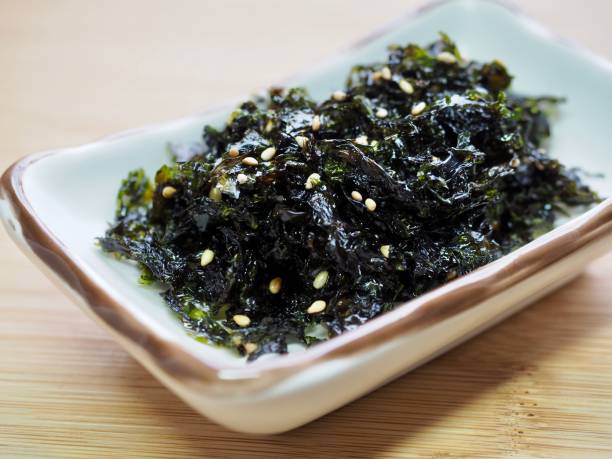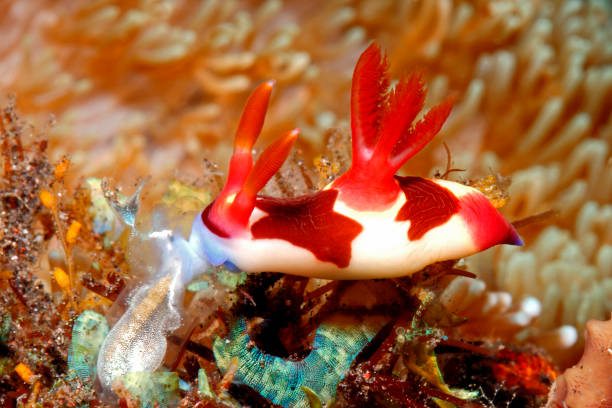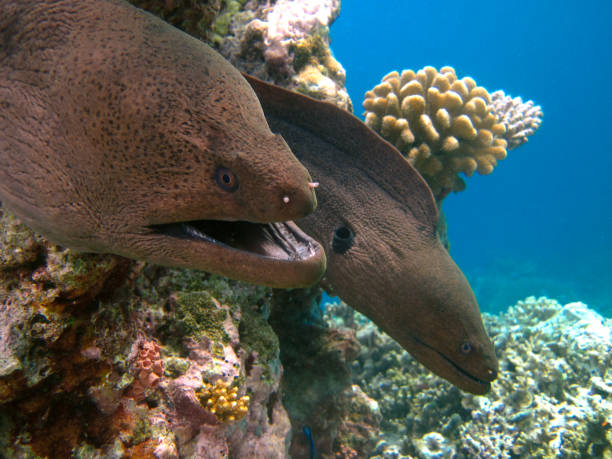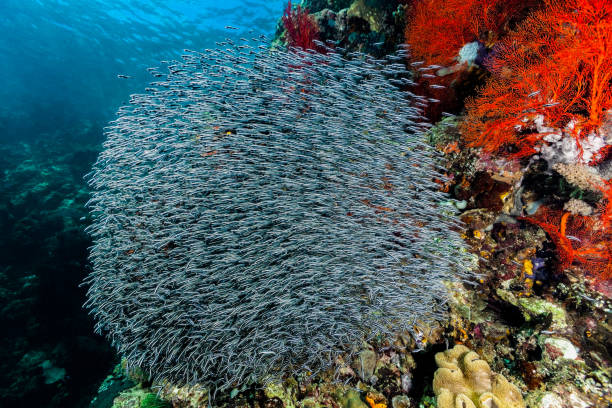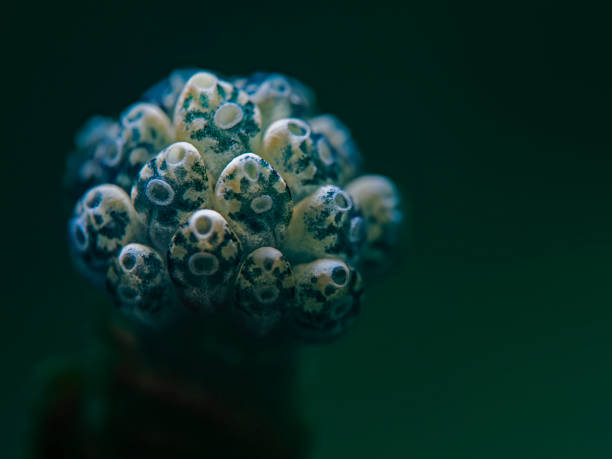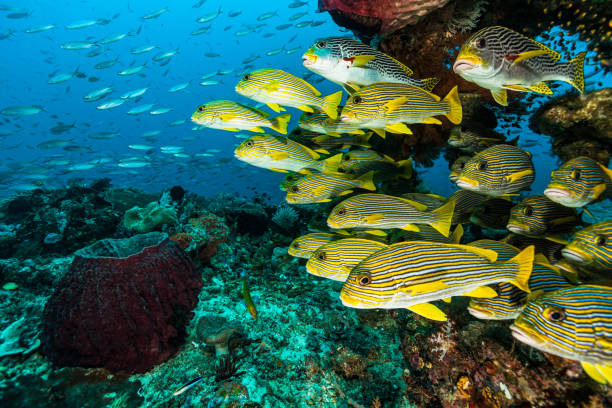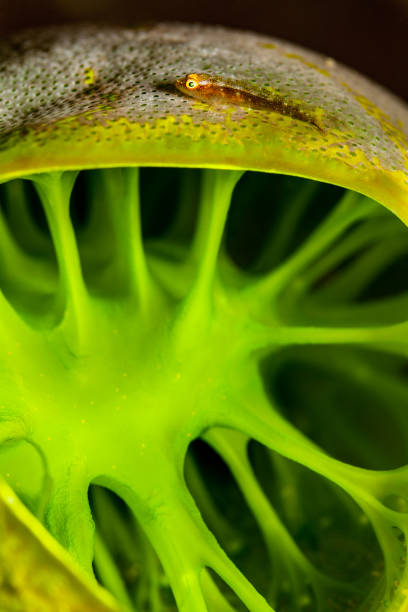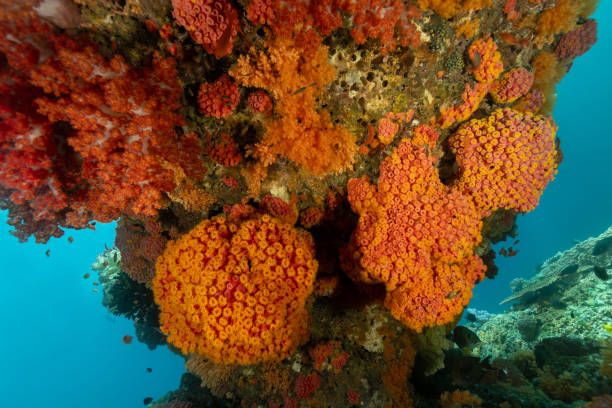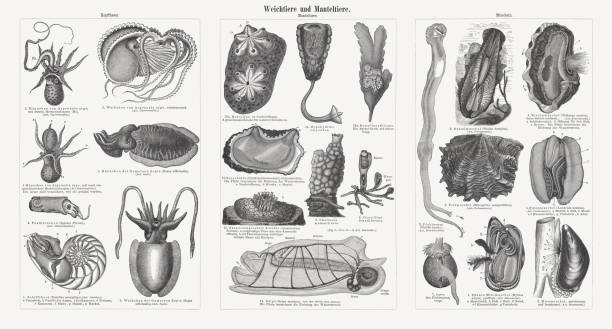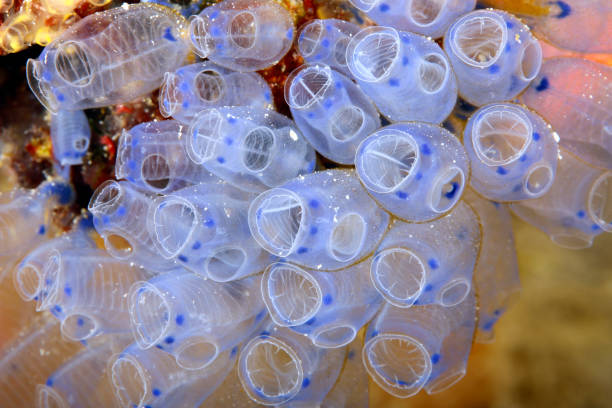
Ascidiacea Pictures, Images and Stock Photos
Browse 920+ ascidiacea stock photos and images available, or search for amphioxus or sea squirt to find more great stock photos and pictures.

Close-up of Pycnoclavella narcissus tunicates. Raja Ampat, Indonesia
Rhopalaea crassa, sometimes known as the blue ascidian,is a species of tunicate belonging to the family Diazonidae
Seascape with tunicates, sponges coral
Moorish Ideols Zanclus cornutus occurs in tropical and subtropical Indo-Pacific in a depth range from 5-182m, max. length 23cm. Abundance of encrusted life, soft and hard corals, ascidians, hydrozoans and sponges. North Kri Island, Raja Ampat, Indonesia, 0°33'15" S 130°41'25" E
Stunning biodiversity with Gorgonian Sea Fans, many species of soft coral and sponges, Acropora sp. stony coral, feather stars, ascidians like didemnum molle on a kind of "island", a little rock formation, just 1m over the bottom in a region of very strong current, where almost nothing can grow. A lot of fish species, Gold-band Fusilier (= Blue and Gold Fusilier = Scissortail Fusilier) Caesio caerulaurea, Blue Streak Fusiliers (= Neon Fusilier) Pterocaesio tile, Webers Chromis Chromis weberi, Klein's Butterflyfish Chaetodon kleinii, Philippines Chromis Chromis scotochiloptera, Threespot Dascyllus Dascyllus trimaculatus at the North East Side of Komodo Island, Komodo National Park, Indonesia, 8°29'38" S 119°34'23" E at 7m depth
Children's illustration.
Sea peach underwater in the S.Lawrence River
The whole reef on one photo, that is possible with a 15mm Full Format Lens. Stunning Biodiversity, many species of hard corals, hydroids, ascidians, some small settlements of dendronephthya soft coral and many fish species as Clown Triggerfish Balistoides conspicillum, Common Bluestripe Snapper Lutjanus kasmira, Philippines Chromis Chromis scotochiloptera, Yellow and Blueback Fusilier Caesio teres, Ribbon Sweetlips Plectorhinchus polytaenia, Sea Goldie Pseudanthias squamipinnis, Redfin Anthias Pseudanthias dispar, Threadfin Anthias Pseudanthias huchtii, Sammara Squirrelfish Neoniphon sammara, juvenile Two-tone Wrasse Thalassoma amblycephalum, Mirror Butterflyfish Chaetodon speculum, Ternate Chromis Chromis ternatensis. Raja Ampat, Indonesia, 0°40'48" S 130°43'51" E at 17m depth
At Batu Kapal there is an incredible abundance of life: soft corals, hard corals, ascidians, sponges, featherstars, hydroids and many fish species: Chromis, Hawkfishes, Triggerfishes, Anthias, Cardinalfishes, a hogfish and a Moorish Ideol. Batu Kapal is a rock shaped like a boat. Batu Kapal means Ship Rock in Bahasa Indonesia. Batu Kapal, Banda Sea, 4°29'11.634 S 129°55'50.934 E at 25m depth
Goldmouth Sea Squirt or Inkspot Ascidian Polycarpa aurata is a sessile animal, a filter-feeder of the class Ascidiacea. The species occurs in the tropical Indo-West Pacific in a depth range from 3-20m. Obviously, the chemical defense of this animal is not only effective against fouling and good for predator deterrence, but against overgrowth too. Kri Island, Raja Ampat, West Papua, Indonesia, 0°33'18" S 130°41'22" E at 17m depth
A lot of Sweetlips, mostly Ribbon Sweetlips Plectorhinchus polytaenia and some Diagonal-banded Sweetlips Plectorhinchus lineatus hide in strong current under a Coral boulder encrusted with sponges, Black coral Antipathes sp., Soft corals Dendronephtya sp., Feather Stars, Hydrozoans, Ascidians and a Barrel Sponge. A school of Swallowtail Cardinalfish Verulux (ex Rhabdamia) cypselura in the background under the boulder and Blue Triggerfishes Odonus niger out in the blue. Raja Ampat, Indonesia, 0°32'23" S 130°37'38" E at 19m depth
Sea larvae: 1) Strobila of Moon jellyfish (Aurelia aurita); 2) Aeginopsis larva; 3) Yungia (Flatworm) larva, 4) Sycandra raphanus, larva; 5) Planula larva of Eucope polystyla (Hydroid); 6) Pilidium larva of a nemertine; 7) Ephyra larva of Moon jellyfish (Aurelia aurita); 8) Trochophore larva of a annelid (Eupomatus uncinatus); 9) Actinula larva of a hydropolyp; 10) Youngest larva of a Siphonophorae (Alophota giltschiana); 11) Larva of a annelid; 12) Larva of a worm (Sipunculus); 13) Bipinnaria larva of a starfish; 14) Larva of a sea squirt (Ascidia mamillata); 15) Pluteus larva of a brittle star; 16) Pentacrinites larva of a feather star (Antedon); 17) Zoea larva of a crab (Lucifer); 18) Larva of the European flat oyster (Ostrea edulis); 19) Pluteus larva of a sea urchin (Strongylocentrotus); 20) Veliger larva of a swimming sea snail (Cymbulia). Raster prints, published in 1900.
Tunicates do not have backbones, but they are vertebrates, why? At some point in their life cycle, they have a tail, a central nerve cord, a pharyngeal gill cleft and a notochord. Often mistaken for sponges, it's simple to test: Tunicates have two siphons and when disturbed, they can rapidly close them. Many different tunicate species are assembled here. Lembeh Strait, North Sulawesi, Indonesia, 1°25'58" N 125°11'59" E at 15m depth
A leather coral Sarcophyton trocheliophorum surrounded by many different species of Ascidians, Hydroids, sponges, feather stars, Sinularia and Dendronephthya soft coral and Gorgonian Coral. Leather corals are a photosynthetic coral and will get most of their energy requirements from photosynthesis. All leather corals are poor at feeding directly but leather corals instead prefer to extract nutrients from the water column. Langkoi Bay, South of Komodo Island, Komodo National Park, Indonesia, 8°44'42.9133" S 119°25'35.2647" E at 16m depth
Hawksbill Turtle Eretmochelys imbricata: the species is critically endangered because of human fishing practices. Hawksbill turtles are able to feed on sea sponges highly toxic and lethal for other organisms. Max. length of carapace 1m (3.3. ft), weighing 80 kg (176 lbs) on average. This specimen swims along a reef full of soft corals and Urn Ascidians Atriolum robustum at the East Side Peleliu Island near South Point, Palau, Micronesia, 6°58'38.099" N 134°13'53.089" E at 14m depth
A school of Golden (or Pygmy) Sweepers Parapriacanthus ransonneti in a frame of hard and soft corals, hydroids, inkspot ascidians Polycarpa aurata. Pygmy Sweepers occur in a depth range from 3-30m in tropical Indo-Pacific, max. length 10cm. They are foraging outside during night to feed on zooplankton. Raja Ampat, Indonesia, 0°34'1.9" S 130°39'44.09" E at 10m depth
Hwang Tae Midge
Two fresh Japanese hoya sea squirt
Hwang Tae Midge
OLYMPUS DIGITAL CAMERA
Shot in studio
Sea pineapple on white background
Close-up of Pycnoclavella narcissus tunicates. Raja Ampat, Indonesia
Humpnose Bigeye Bream Monotaxis grandoculis occurs in the tropical Indo-Pacific in a depth range from 1-100m, usually 5-30m, max. length 60cm, common 40cm. Many other fish species, as Anthias, Emperors, Surgeons, Fusiliers, Triggerfishes, Wrasses, Butterflyfishes and Sweetlips. Raja Ampat, Indonesia, 0°32'43" S 130°41'54" E at 10m depth
OLYMPUS DIGITAL CAMERA
Filigree black coral at a colorfully overgrown steep drop. There are sun corals, ascidians and sponges. A Comet Starfish is there too. Palau 7°8'14.72 N 134°13'19.09 E at 28m depth
shot in the studio
A colorful biodiversity with hydroids, ascidians, sponges, sun corals Tubastra faulkneri, Soft cral Dendronephthya sp. and a large Soft Coral Fan Siphonogorgia godeffroyi dominating the scenery. Siphonogorgia godeffroyi is a soft tree coral with a gorgonian like appearance, but there is no skeleton in the coral stem, it is stabilized just by the inner pressure. Colonies are bicolored: the coral stem is vivid red or wine red with white to yellow polyps. Frequently encountered inhabitant of reef slopes, vertical surfaces, and overhangs. A Bignose Unicornfish Naso vlamingii swimming down. Palau 7°8'14.72 N 134°13'19.09 E at 26m depth
Blue Striped Tunicate Rhopalaea circula occurs in the Western Central Pacific in a depth range from 6-18m. Tunicates do not have backbones, but they are vertebrates, why? At some point in their life cycle, they have a tail, a central nerve cord, a pharyngeal gill cleft and a notochord. Often mistaken for sponges, it's simple to test: Tunicates have two siphons and when disturbed, they can rapidly close them. Palau 7°6'55.26 N 134°16'11.96 E at 25m depth, deeper than the usually noted 18m maximum depth.
Shot in studio
This banded sea urchin Echinothrix calamaris at the edge of the reef is surrounded by all kind of encrusted life, a Tropical Striped Triplefin Helcogramma striatum (4 cm = 1.6 inches) on top. The algae feeding sea urchin species inhabits shallow coral and coral rubble areas of the Indo-Pacific, usually at depths of 1 to 40 m, reported from 90m, max. length 15cm. Pantar Street, West Coast of Alor, Indonesia, 8°20'34" S 124°23'1" E at 3 m depth
Shot in studio
Pristine reef, mainly with many species of hard corals. A large school of Philippines Chromis Chromis scotochiloptera dominates the scenery, but many other fish species to see, as Sea Goldie Pseudanthias squamipinnis, Klein's Butterflyfish Caetodon kleinii, Sergeant Major Abudefduf vaigiensis, Rabbitfish Siganus sp., Moon Wrasse Thalassoma lunare, Big Unicornfish Naso vlamingii, Scissortail Sergeant Abudefduf sexfasciatus, Threadfin Anthias Pseudanthias huchtii. Several Feather Star species, Ascidians like Didemnum molle and some Sinularia soft corals. Komodo National Park, Indonesia, 8°34'36.4755" S 119°40'39.354" E at 10m depth
Two large schools of fish, Pygmy Sweepers Parapriacanthus ransonneti on top and Swallowtail Cardinalfishes Rhabdamia cypselura below, some Yellowtail Demoiselles Neopomacentrus azysron inbetween. There are Ascidians, Gorgonian Fans, Hydrozoans and Sponges. South of Waigeo Island, Raja Ampat, Indonesia, 0°34'50.46" S 130°32'30.79" E at 15m depth
One whole hoya sea squirt on grey background
Fresh Seaweed Soup with dried pollack, Hwangtae Miyeok-guk
OLYMPUS DIGITAL CAMERA
a type of seaweed, is dried and eaten as it is, or seasoned with grilled seaweed and corn oil
Sea Goldies Pseudanthias squamipinnis, more females than males (males with elongated dorsal fin) are the predominant fish species here, but many others like Wrasses (Sixbar Wrasse Thalassoma hardwicke and a lot of juvenile Moonwrasses Thalassoma lunare), Butterflyfishes (Chaetodon kleinii), Triplefins and Surgeonfishes are there. Stinging Hydrozoans, Sponges, different coral species, a great diversity of species! Pantar Strait, Pantar Island, Indonesia, 8°17'7.21" S 124°18'16.77" E
A perfect Variable Finger Leather Coral Sinularia sp. dominates the underwater scenery. Sinularia has small polyps on the surface of its branches and can actually create a solid base around the bottom of the coral. Alcyonacean octocorals in tropical reefs are usually not considered as reef builders, Sinularia is actually the only reef building soft coral. Leather corals are a photosynthetic coral and will get most of their energy requirements from photosynthesis. All leather corals are poor at feeding directly but leather corals instead prefer to extract nutrients from the water column. There are Feater Star and Sponge species, Ascidians like Polycarpa aurata and a lot of Acropora sp. hard coral and Hydroids. Komodo National Park, Indonesia, 8°34'36.4755" S 119°40'39.354" E at 6m depth
Shot in studio
A Red-Gilled Nudibranch, or Sea Slug, probably Nembrotha chamberlaini, eating an Ascidian. The radula can be seen in the ascidian. Tulamben, Bali, Indonesia.
Giant Moray Eel - Gymnothorax Nudivome two animals on coral reef of Maldives.
These juvenile Convict Blennies Pholidichthys leucotaenia resemble the venomous striped catfish Plotosus lineatus. By swimming in school, individuals are better protected from predators and they swim more efficiently, even the foraging is improved. The movement of this "fish ball", at least 8000-12000 individuals, is well synchronized, that requires coordinated body positions. Adults live secretively in reefs and have a barred or spotted color pattern. Hard and soft Corals, feather stars, ascidians on this rich reef. Bangka Strait, North Sulawesi, Indonesia, 1°41'23" N 125°8'35" E at 8m depth
A lot of Sweetlips, mostly Ribbon Sweetlips Plectorhinchus polytaenia and some Diagonal-banded Sweetlips Plectorhinchus lineatus hide in strong current under a Coral boulder encrusted with sponges, Soft corals Dendronephtya sp., feather stars, Hydrozoans, Ascidians. A Barrel Sponge Xestospongia testudinaria at the left. A school of Swallowtail Cardinalfish Verulux (ex Rhabdamia) cypselura under the bolder, a large school of Blue Streak Fusiliers (= Neon Fusilier) Pterocaesio tile in the background. Some more fishes like Bluestreak Cleaner Wrasse Labroides dimidiatus, Moon Wrasse Thalassoma lunare, Bluestriped Fangblenny Plagiotremus rhinorhynchos and Tropical Striped Triplefin Helcogramma striatum. Raja Ampat, Indonesia, 0°32'23" S 130°37'37.5" E at 19m depth
Toothy goby Pleurosicya mossambica occurs in the tropical Indo-Pacific in a depth range from 2-30m, max. length 3cm. Sea Squirts like Didemnum molle are thought to be ancient ancestors of the vertebrates because of their fish-like larvae. Adults are attached to the sea floor and filter food from the water. This specimen is from East of Sangeang Island, Indonesia, near Sumbawa, 8°9'46.5" S 119°0'30.5" E at 18m depth
Dendronephthya Soft Coral and Orange Cup Coral Tubastraea coccinea dominate the scenery at this colorful rock overhang. But there are Feather Star Fishes, Sponges and Colonial Ascidians too and a lot of Anthias and Damselfishes inbetween. In the background there are Wrasses, Breams, Parrotfishes, Surgeonfishes and Butterflyfishes, a high biodiversity. Tubastraea coccinea, a large-polyp stony coral, is not a reef building species. The coral extends beautiful translucent tentacles at night and in daytime on sunprotected areas of the reef like on this rock overhang. Tubastraea coccinea does not contain zooxanthellae in its tissues as many tropical corals do, allowing it to grow in complete darkness as long as it can capture enough food. Triton Bay, Westpapua, Indonesia 3°57'58.68 S 134°9'6.27 E at 9m depth
Molluscs and tunicates: cephalopods (left), tunicates (middle), mussels (right). Wood engravings, published in 1897.
